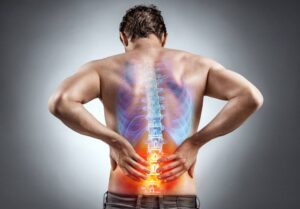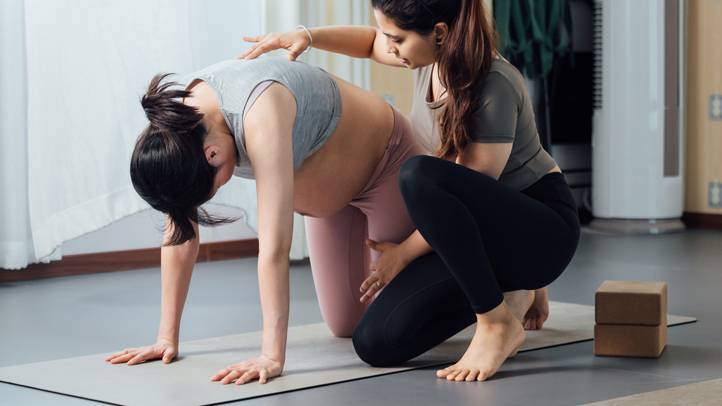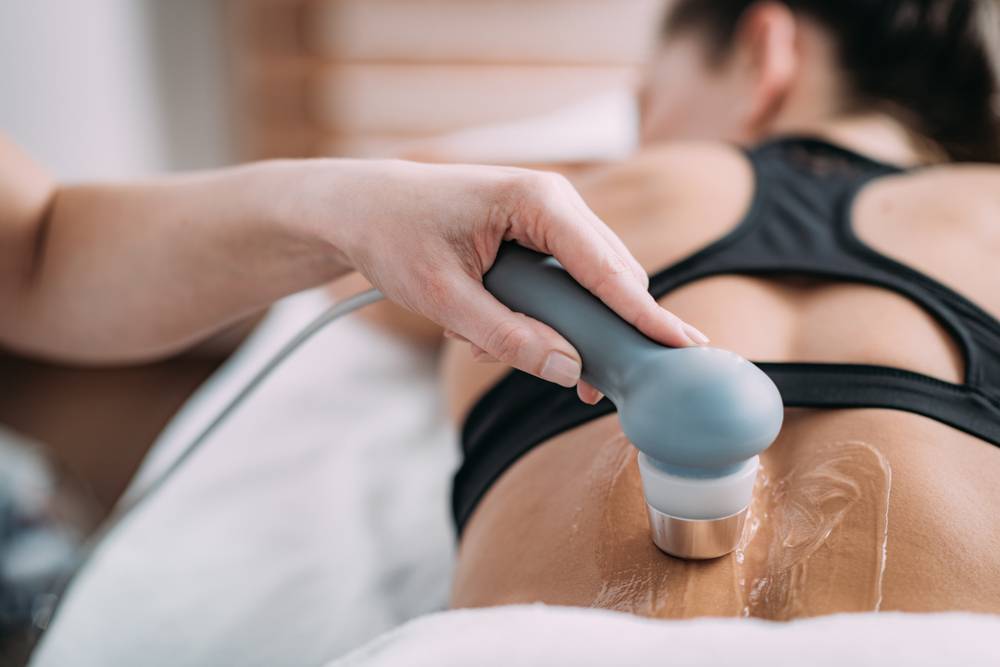Back pain can be frustrating, especially when it seems to come out of nowhere. If you have psoriatic arthritis, you might notice that your back pain isn’t just about a pulled muscle or bad posture — it could be a symptom of your condition affecting your spine.
Psoriatic arthritis is an autoimmune disease that not only causes joint pain but can also lead to inflammation in the spine, resulting in chronic back pain. The good news is that you don’t have to just live with it! With the right treatment and lifestyle changes, you can manage the pain and live a more comfortable life.
In this blog, we’ll explore how psoriatic arthritis causes back pain, the symptoms to watch for, and the best ways to get relief. If you’re ready to learn how to manage your back pain, keep reading!
Contents
- 1 What Is Psoriatic Arthritis and How It Affects the Back?
- 2 Common Symptoms of Psoriatic Arthritis in the Back
- 3 How Psoriatic Arthritis Causes Back Pain
- 4 Exercises for Relieving Back Pain from Psoriatic Arthritis
- 5 Lifestyle Changes to Manage Psoriatic Arthritis Back Pain
- 6 Medical Treatments for Psoriatic Arthritis-related Back Pain
- 7 When to Consult a Specialist
What Is Psoriatic Arthritis and How It Affects the Back?
 Psoriatic arthritis (PsA) is an inflammatory condition that occurs in people with psoriasis, a skin disorder that causes red, scaly patches. PsA affects not only the skin but also the joints, and in many cases, it targets the spine, causing significant back pain.
Psoriatic arthritis (PsA) is an inflammatory condition that occurs in people with psoriasis, a skin disorder that causes red, scaly patches. PsA affects not only the skin but also the joints, and in many cases, it targets the spine, causing significant back pain.
Here’s how PsA affects the back:
-
Inflammation in the Spine: The immune system mistakenly attacks healthy tissues in the spine, causing inflammation in the joints and surrounding areas.
-
Sacroiliac Joints: These are the joints at the base of the spine, where the spine meets the pelvis. Inflammation here can lead to lower back pain and stiffness.
-
Pain and Stiffness: The inflammation in the spine can cause pain, especially in the morning or after periods of rest. The pain may also worsen with certain movements or activities.
Unlike regular back pain caused by muscle strain, psoriatic arthritis-related back pain is due to joint inflammation. This makes it a persistent issue that can interfere with your daily routine, including sitting, standing, and bending.
Understanding how psoriatic arthritis affects the spine is crucial for managing symptoms and preventing further discomfort. By recognizing the link between PsA and back pain, you can take the necessary steps to relieve your symptoms and improve mobility.
Common Symptoms of Psoriatic Arthritis in the Back
 When psoriatic arthritis affects the back, it can lead to several symptoms that may make everyday activities difficult. Recognizing these signs early can help in managing the condition effectively. Here are the typical symptoms of back pain caused by psoriatic arthritis:
When psoriatic arthritis affects the back, it can lead to several symptoms that may make everyday activities difficult. Recognizing these signs early can help in managing the condition effectively. Here are the typical symptoms of back pain caused by psoriatic arthritis:
-
Stiffness in the Morning
Many people with PsA experience stiffness in the back, especially after waking up. This stiffness tends to improve with movement but can make getting out of bed or starting the day challenging. -
Pain in the Lower Back
The lower back is a common area affected by PsA. The pain can vary from a dull ache to sharp discomfort, particularly after sitting or standing for long periods. -
Inflammation in the Spine
Inflammation of the sacroiliac joints (located at the base of the spine) can cause swelling and pain, making it difficult to bend or twist. -
Reduced Mobility
The inflammation can make it harder to move freely. Activities like bending, lifting, or even walking for long distances can become painful. -
Pain that Worsens with Rest
Unlike muscle pain, PsA-related back pain tends to worsen after periods of rest, such as sitting for a while or sleeping. The pain may subside somewhat with gentle movement but may return with prolonged inactivity. -
Tenderness
The affected area may feel tender to the touch, particularly around the lower back and sacroiliac joints, indicating active inflammation.
If you’re experiencing these symptoms, it’s important to consult a healthcare provider for an accurate diagnosis and effective treatment plan. Identifying PsA early can help you manage pain and prevent further damage to your spine.
How Psoriatic Arthritis Causes Back Pain

Psoriatic arthritis (PsA) causes back pain through a process of inflammation in the spine and sacroiliac joints. Here’s how it works:
-
Inflammation of the Spine
In PsA, your immune system mistakenly attacks the healthy tissues in the spine, causing inflammation in the joints between the vertebrae (bones of the spine). This inflammation can lead to pain, stiffness, and swelling in the lower back, which can worsen with movement. -
Sacroiliac Joint Inflammation
The sacroiliac joints, located where the spine meets the pelvis, are common sites of inflammation in people with PsA. When these joints become inflamed, they cause sharp pain in the lower back, hips, and buttocks. The pain can be aggravated by activities like sitting, standing for long periods, or climbing stairs. -
Joint Damage Over Time
Chronic inflammation can cause the cartilage in the spine and sacroiliac joints to break down. This damage can lead to a loss of flexibility in the spine, causing reduced mobility and increased pain. -
Fusion of the Spine (Ankylosis)
In severe cases, the inflammation may cause the vertebrae to fuse together, a condition known as ankylosing spondylitis. This fusion restricts spinal movement, leading to chronic stiffness and further discomfort in the back. -
Pain Fluctuations
The pain caused by PsA in the back is often intermittent. It may get worse with periods of rest or inactivity, and some people feel relief with gentle movement or stretching.
The inflammation in the spine and sacroiliac joints caused by PsA can lead to chronic back pain that doesn’t just go away. Early diagnosis and treatment are essential to manage pain, prevent further damage, and improve your quality of life.
Exercises for Relieving Back Pain from Psoriatic Arthritis

Exercising may seem challenging when dealing with psoriatic arthritis (PsA) and back pain, but gentle, targeted exercises can help reduce pain, increase flexibility, and improve mobility. Here are some recommended exercises and stretches specifically designed for people with PsA to relieve back pain and improve overall function:
-
Gentle Walking
-
How to do it: Start with short walks around your home or outdoors, aiming for 10-15 minutes a day. Gradually increase the duration as your back feels stronger.
-
Benefits: Walking is a low-impact exercise that helps keep the spine moving, increases circulation, and eases stiffness without putting pressure on the joints.
-
-
Pelvic Tilts
-
How to do it: Lie on your back with your knees bent and feet flat on the floor. Tighten your stomach muscles and push your lower back into the floor. Hold for 5 seconds, then relax. Repeat 10-15 times.
-
Benefits: Strengthens the lower back and abdominal muscles, helping to stabilize the spine and reduce pain.
-
-
Cat-Cow Stretch
-
How to do it: Start on your hands and knees in a tabletop position. Inhale and drop your belly toward the floor (cow position), then exhale and round your back upward (cat position). Repeat 10-12 times.
-
Benefits: This stretch improves spinal mobility, reduces stiffness, and helps ease tension in the back.
-
-
Bridge Exercise
-
How to do it: Lie on your back with knees bent and feet flat on the floor. Slowly lift your hips off the floor, forming a straight line from your knees to shoulders. Hold for 5 seconds, then lower slowly. Repeat 10-15 times.
-
Benefits: Strengthens the glutes, lower back, and core muscles, providing more support to the spine.
-
-
Knee to Chest Stretch
-
How to do it: Lie on your back with your knees bent. Bring one knee up toward your chest, holding it with both hands for 20-30 seconds. Switch legs. Repeat 2-3 times per leg.
-
Benefits: Relieves lower back tension and stretches the muscles around the hips and spine.
-
-
Spinal Twist
-
How to do it: Sit with your legs extended in front of you. Cross your right leg over the left and place your left elbow on the outside of your right knee. Gently twist your upper body to the right. Hold for 20-30 seconds, then switch sides.
-
Benefits: Improves spinal mobility and helps stretch the lower back and hips.
-
-
Standing Forward Bend
-
How to do it: Stand with your feet shoulder-width apart. Slowly bend forward at the hips, bringing your chest toward your knees. Hold for 15-20 seconds, then slowly return to standing.
-
Benefits: Stretches the hamstrings and lower back, helping to ease tension and stiffness.
-
Tips for Safe Exercise
- Start Slow: If you’re new to exercise, start with gentle stretches and low-intensity activities. Gradually increase as your strength and flexibility improve.
- Avoid Overexertion: Don’t push through pain. If an exercise causes discomfort or pain, stop and consult a healthcare provider.
- Focus on Consistency: Aim for regular, consistent exercise rather than intense sessions that may strain your joints.
Incorporating these exercises into your daily routine can help alleviate back pain caused by psoriatic arthritis and improve overall spinal health. Always consult with your doctor or physiotherapist before starting any new exercise program to ensure it’s safe for your condition.
Lifestyle Changes to Manage Psoriatic Arthritis Back Pain

Managing back pain from psoriatic arthritis goes beyond exercises and medications. Certain lifestyle changes can significantly reduce pain, prevent flare-ups, and improve overall well-being. Here are some simple adjustments you can make to help manage your back pain:
-
Maintain a Healthy Weight
By maintaining a healthy weight, you can reduce the strain on your back and joints, easing pain and improving mobility. -
Prioritize Good Posture
Use ergonomic chairs, avoid slouching, and ensure your workspace supports proper posture to minimize back discomfort. -
Rest and Recover
While staying active is important, rest is equally crucial. Make sure to listen to your body and take breaks when needed. -
Use Heat or Cold Therapy
Heat can help relax muscles and reduce stiffness, while cold therapy can help reduce swelling and numb pain. -
Manage Stress
Practice stress-relieving techniques like deep breathing, meditation, or mindfulness to help reduce tension and manage pain more effectively. -
Sleep in a Supportive Position
Sleeping on your side with a pillow between your knees or on your back with a pillow under your knees can help align your spine and reduce discomfort. -
Quit Smoking
Quitting smoking helps improve blood flow, reduce inflammation, and can improve overall joint health. -
Stay Hydrated
Drinking plenty of water helps keep your joints lubricated, reducing stiffness and pain. Proper hydration also supports the function of muscles and tissues around the spine. -
Monitor Your Symptoms Regularly
Keep track of your symptoms, including pain levels, stiffness, and mobility. This will help you recognize triggers and make necessary adjustments to your routine or treatment plan.
By making these simple lifestyle changes, you can reduce back pain from psoriatic arthritis, improve your overall quality of life, and prevent further complications. It’s about taking control of your health and finding a balance between activity, rest, and self-care.
 Managing back pain from psoriatic arthritis may require a combination of treatments. Here are some effective options:
Managing back pain from psoriatic arthritis may require a combination of treatments. Here are some effective options:
Medications
- NSAIDs (Nonsteroidal Anti-Inflammatory Drugs) can help reduce pain and inflammation.
- Disease-modifying antirheumatic drugs (DMARDs) can slow the progression of PsA and reduce joint damage.
- Corticosteroids may be used for short-term flare-ups to reduce inflammation quickly.
Physical Therapy
- A physical therapist can guide you through targeted exercises to improve flexibility, strengthen muscles, and relieve pressure on your back.
Biologic Therapies
- Biologics (such as TNF inhibitors) are used to target the underlying immune system dysfunction, reducing inflammation and preventing further joint damage.
Pain Management Techniques
- Acupuncture, chiropractic care, and massage therapy can also offer pain relief and improve mobility.
With the right combination of medications and physical treatments, you can effectively manage psoriatic arthritis-related back pain and improve your quality of life. Always consult with your doctor to determine the best treatment plan for your needs.
When to Consult a Specialist
If you’re experiencing persistent back pain or discomfort that doesn’t improve with over-the-counter medications or lifestyle changes, it’s time to consult a specialist. Early intervention can prevent further damage and help you manage psoriatic arthritis effectively.
You should consider seeing a rheumatologist or orthopedician if:
- Your back pain is interfering with daily activities.
- You notice stiffness or swelling that worsens over time.
- You’re having difficulty moving or maintaining normal mobility.
- Over-the-counter pain relief isn’t providing lasting relief.
At MantraDoc, you can easily consult an online orthopedician who specializes in psoriatic arthritis and back pain. Get expert advice, personalized care, and guidance on managing your symptoms from the comfort of your home.

